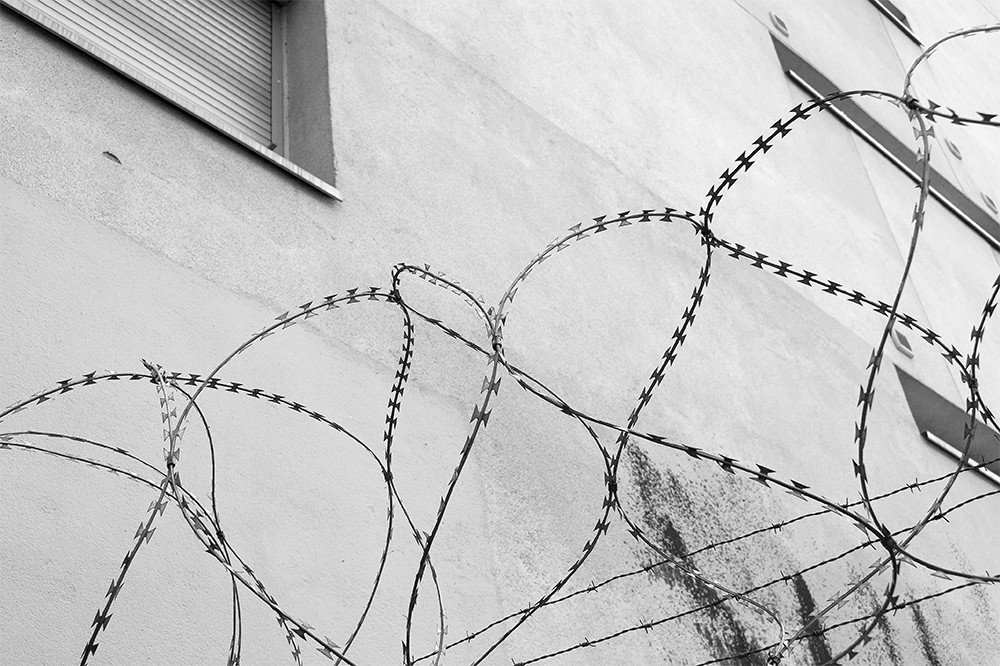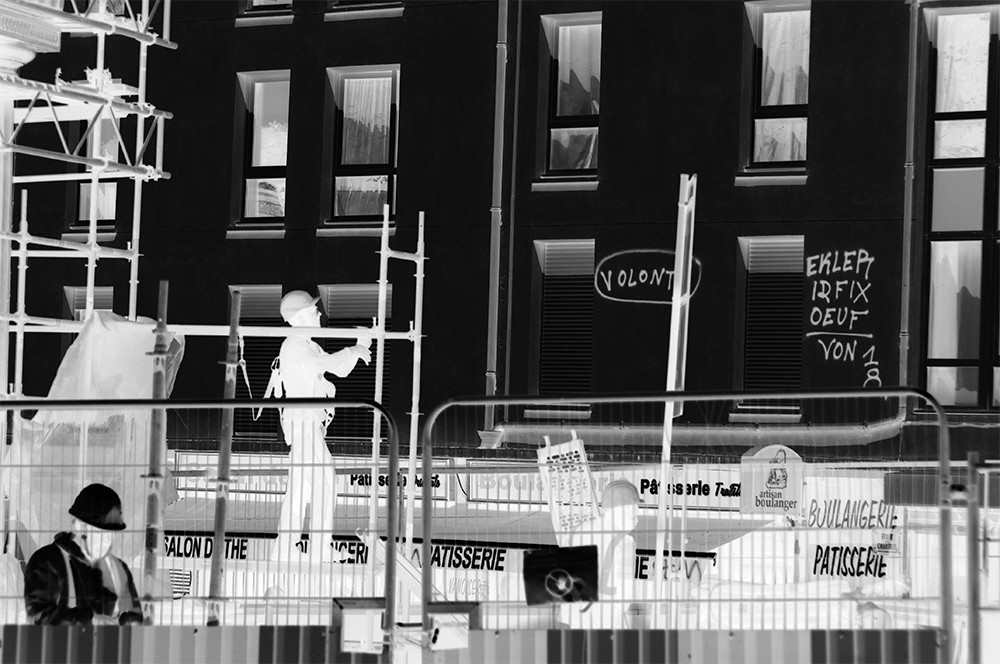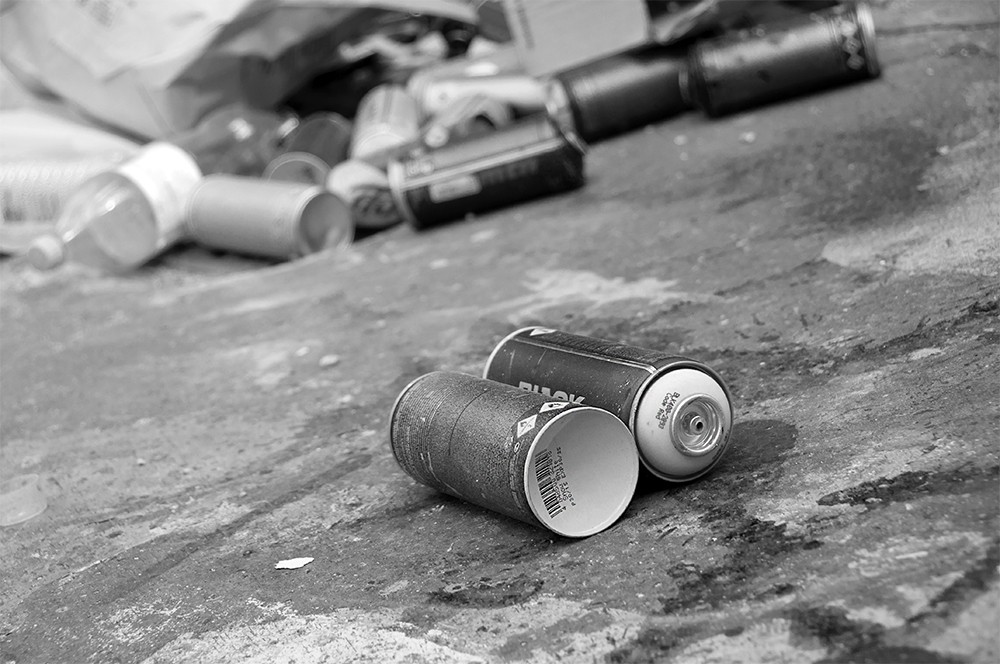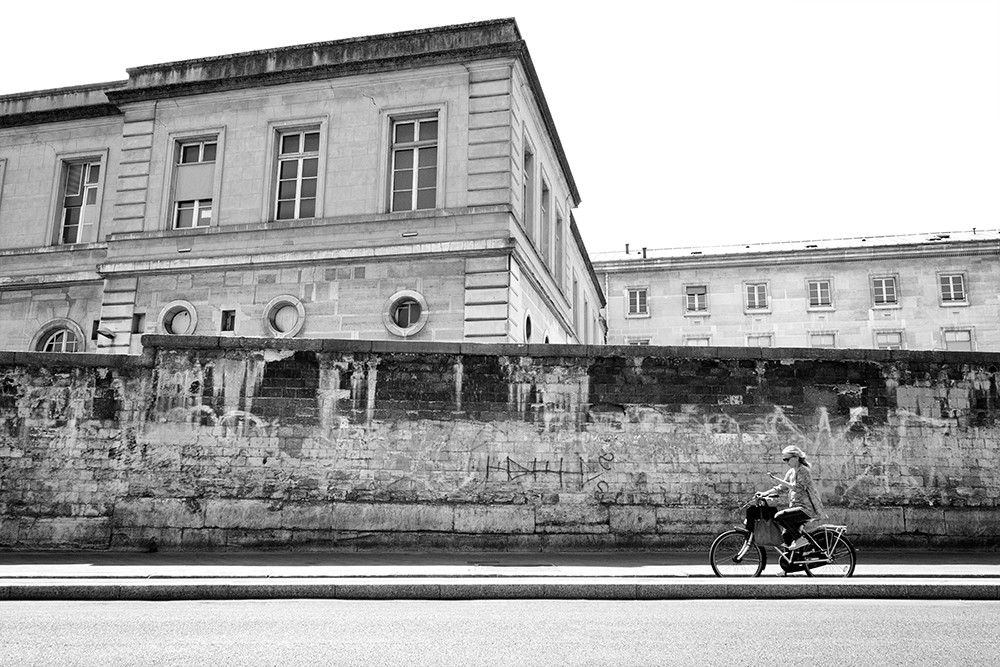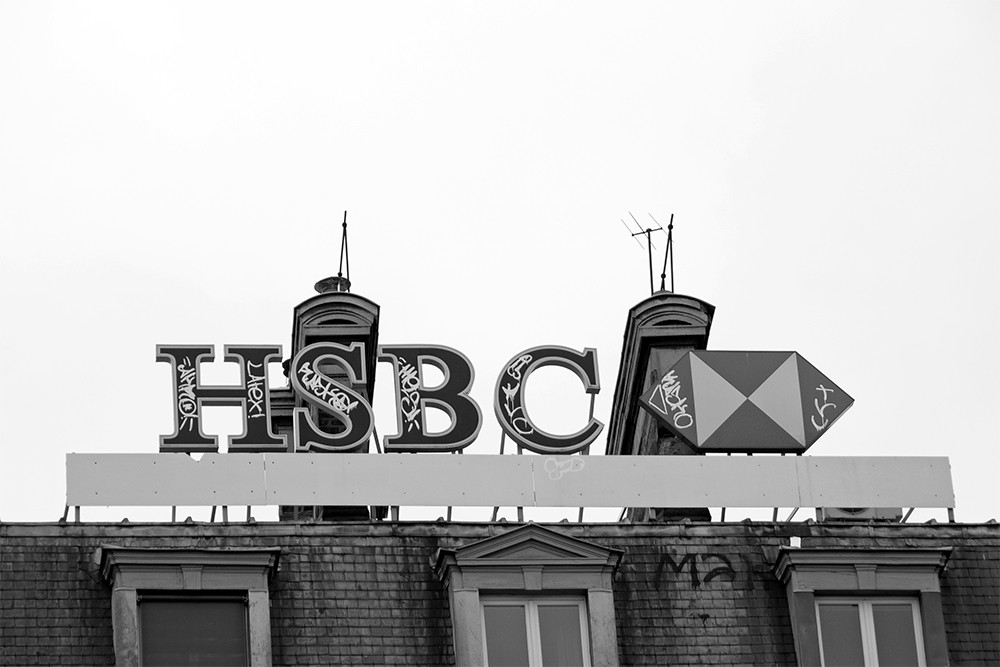A Whole Other System: ‘Paris photo graff’ Continued

“If you needed to know anything that happened on the subway,” according to Wicked Gary, a Naked City tagger from back in the day,
you could ask a graffiti artist and he could tell you…We knew everything that was happening. That was our playground, that was our work and…we were very involved. Schedules of trains, schedules of tunnels, we had information on everything. It was a whole other system of communication and interaction from the normal system that we deal with like the English language and money and stuff like that. We had our own language, our own technology, terminology. The words we had meant things to us that nobody else could identify.
Wicked Gary explained that when he and his fellow Brooklyn writers heard about a hangout at 149th Street and Grand Concourse in the Bronx, they started venturing crosstown “to try to find these people, to let them know our ideas and get involved with them.” The New York City subway system had served for several years already as an itinerant gallery of graffiti artists’ work, each car and even whole trains a canvas for getting up as well as a roving billboard for getting out the word. Beyond the cinematic spectacle they offered the city at large, their bubble letters and Technicolor cartoons going by at the speed of four or five frame-cars per second, the trains constituted a rhizome of newfangled pneumatic tubes, shuttling coded messages through the dark and pissdank tunnels, then over bridges likewise blitzed with graff, across the five boroughs. With the advent of writers’ corners, however, beginning with the 188th Street and Madison Avenue joint in Manhattan in 1972, these artists could meet in person, acting as their own agents and couriers. Other early corners established where the 4, 5, and 6 lines of the IRT converged at Brooklyn Bridge, for example, or at Atlantic Avenue station in Brooklyn where the 2, 3, 4, and 5 met the D, QB, and M, encouraged writers to start mingling in groups. If attending a matinee of short graff-films together—some of them starring your friends or your crew, or featuring you in a cameo role—transiting through the station every few minutes was part of the thrill, “finding out who was who and what was what” was clearly another. Alongside a prevailing sense of rivalry, writers shared their notebook drafts and photo albums, outlined ideas, compared notes on bombing techniques, requested each others’ autographs, schemed when and where and how to hit which trains, and traded tricks of the trade.
Whether committed to interruption or uplift, or both, the community building and aesthetic ingenuity available at the writers’ corners in the early 70s were enabled by the exhilaration—with exclusivity at its core, of course—of wielding, as Wicked Gary proudly claimed, “our own communication system.” The grammar and syntax of this system, like its signatures and signifiers, its modes of production and distribution, were alien and perhaps offputting—if not downright offensive—to anyone not trained, as it were, in the trains. “The communication was tight,” moreover, as Bama, a.k.a. AMRL, observed. As the network refined itself steadily, “It got to the point where you could say something at Atlantic Avenue, and an hour later at 149th Street and Grand Concourse, you’d hear it over.” Chinese whispers, made in the U.S.A. In an all-out affront to the concept of public space, the police, of course, would soon crack down on these—already peripheral—centers of information exchange and artistic alliance, forcing writers into more discrete, still more discreet configurations.
Out on the street, in Paris last summer, Tomek and Lopez had been volleying on corrugated metal fencing at the corner of Rue des Bourdonnais and Rue des Halles. About what, exactly, I had no idea, although I’m pretty sure it wasn’t about the World Cup, France having defeated Belgium in the semis 1-nil the night before—everyone in the country, no matter how much they hate one another whenever Les Bleus are off season, is united around football for a couple weeks every four years. Although I could tell they were dueling, one name sparring with another, my ability to access any further ‘content,’ although it was hiding right there in plain sight, was accentuated by the difficulty, due to construction in front of the Carpe Diem café, of finding a decent position to shoot the shouting match from. I ended up underneath the makeshift billboard, pointing my camera skyward, as if these enigmatic exchanges were the object code for erecting a neo-sublime to exceed the lens, injecting my sort-of pleasure with minor terror.
This additional inconvenience and inaccessibility struck me as ideologically ideal. That I didn’t get the point—or could not even get at it, really—was precisely the point. Examining the graff that flared up alongside the Gotham writers’ corners around 1972, Jean Baudrillard claimed that, as New York transformed from an industrial site of commodity production to a “zone of signs, the media and the code,” graffiti exhibited a new political necessity, hailing from its attack on this “contemporary semiocracy.” Seeded with phrases like “guerilla action” and “an orgy of graphics,” “savage offensive” and “a riot of signs,” Baudrillard’s essay “Kool Killer, or, The Insurrection of Signs” argued that graffiti—heir to the urban riots of the late 60s and retooled to intervene into the late capitalist “semiurgy”—drew its efficacy from an imperative to speak while saying exactly nothing: “graffiti has no content and no message,” he stated, and “this emptiness gives it its strength.” If graffiti trafficked primarily in names—often taken, as Baudrillard noted, from underground comics, followed by a street number—its revolt was nonetheless not simply identitarian, since while writers refused to use their own names despite demanding social legitimacy, they also declined to make their case anonymously. Instead, “graffitists went further,” Baudrillard avowed,
in that they opposed pseudonyms rather than names to anonymity. They are seeking not to escape the combinatory in order to regain an identity (which is impossible in any case), but to turn indeterminacy against the system, to turn indeterminacy into extermination. Retaliation, reversion of the code according to its own logic, on its own terrain, gaining victory over it because it exceeds semiocracy’s own non-referentiality.
Writing in 1976, Baudrillard rightly observed that graffiti had already become less violent than it had been a short four years earlier. The police, for one thing, had improved its repressive tactics,
including infiltrating the corners, making writing dangerous, a ticket to jail, even a matter of life and death. Aesthetic styles developed, as well, until graffiti could be widely hailed as an art form and recuperated under the requisite institutions: gallery, gift shop, exhibition catalogue. The antagonistic essence of graffiti was defanged, even admiringly, by being interpreted in terms of identity reclamation, personal freedom, and romanticized nonconformism. And, of course, capitalism co-opted its strategies, paying some producers handsomely while cherrypicking others, marketing the movement’s main moves, from audacious aerosol graphics to an ‘outlaw’ attitude designed for suburban teens with hipster jeans. More than 40 years on, however, I would maintain—part faith, part fantasy maybe, but primarily a fact observed on the ground—that in its rapport with signal jamming, collective noise, and taking back neglected spaces while de-territorializing the city proper, graffiti continues to stand as a visible, viable paradigm of recalcitrance.
The writer’s pseudonym “means nothing,” in Baudrillard’s estimation, that nothingness being its very value,
it is not even a proper name, but a symbolic matriculation number whose function it is to derail the common system of designations. Such terms…burst into reality like a scream, an interjection, an anti-discourse, as the waste of all syntactic, poetic and political development, as the smallest radical element that cannot be caught by any organized discourse. Invincible due to their own poverty, they resist every interpretation and every connotation, no longer denoting anyone or anything. In this way, with neither connotation nor denotation, they escape the principle of signification and, as empty signifiers, erupt into the sphere of the full signs of the city, dissolving it on contact.
Graffiti is the useless surplus of those purely functional discourses—so normative by consensus they’ve been camouflaged as normal—deployed in the daily service of a project, product, or progress. Refuse as refusal. But graffiti is also what aspires to knock the teleological movement of language, wherever it finds it, off the tracks, ruining signification of any kind—including poetry, according to Baudrillard, should a poem be directed toward an ostensible aim, which curates its constituent elements into a symbiotic, developmental whole, i.e., a message.
Wishful, wistful thinking on my end, perhaps. But what if graffiti—for all its escape routes and excess, its penchant for frustrating interpretive gestures, exhausting even some efforts to try—no longer bears quite the societal superpowers attributed to it by the utopian, post-structuralist will? (Baudrillard’s account of New York in the early 70s must have been inflected by the Paris unrest of May ’68, where the famous graffiti scribbled by students, striking workers, Situationists and other résistants did, in contrast to the later NY scene, propagate identifiable messages, albeit ironic and often indirect.) What if a tag, a throwie, a worm, does stay above the lower threshold of meaning, but only barely? It’s a question here, as it so often is, of who is doing the looking and listening. I am persuaded by Daniel Tiffany’s argument, in his Infidel Poetics, that what literary critics often call “obscurity”—with approval or, more usually, derision—is not necessarily evidence of a complex or sophisticated text. I am equally convinced, although he himself doesn’t go there, that Tiffany’s line of argument, while engaging the lyric poem, is equally pertinent to the impertinence of graffiti. To understand why some texts elude our understanding, we “must reject,” Tiffany suggests,
the common presumption, associated with models of textual difficulty, that obscurity is principally a feature of works considered to be arcane, virtuosic, or deliberately experimental. On the contrary, taking into account the social implications of the term “obscure,” one must consider the possibility that literary conceptions of obscurity may be rooted in the social misunderstanding of demotic speech, thereby shifting the phenomenology of obscurity away from its conventional association with elite culture and toward the lyric vernacular—especially poems composed in slang, jargon, or dialect.
However virtuosic a piece of graffiti might be—whether it’s the handwriting style, the choice of location, the precursors it summons, the foes it puts down—it comes out of the vernacular. If it’s not entirely readable, or isn’t legible at all, it’s not because it participates in a highbrow culture requiring a formal education or edification to appreciate, let alone comprehend. To the contrary, the obscurity of graffiti, like that of the lyric, as Tiffany’s study unfolds in great detail, is tied to the secret, the riddle, the enigma. “From the perspective of the educated elite, therefore,” he continues,
lyric obscurity, by its ability to evoke the dangerous speech of various social underworlds, produces a kind of sociological sublime—a significant revision of theories linking poetry and the sublime. Instead of reinforcing the traditional association of sublimity and elevation, lyric obscurity may trigger a variation of the sublime associated with the abject: a vernacular sublime (a disposition inherent in the etymological—and dialectical—correspondence between the term “sublime” and “subliminal”).
Tiffany takes the lengthy Anglo-Saxon riddles of the Exeter Book manuscript as a sort of ur-text. Posed as questions that invite a listener or reader to decipher them, the riddles constitute an exemplary “guessing game” which, far from foreclosing sociality, as the labor and imaginative limberness of such hermeneutic exercises seemingly risk, instead opens the social up. The playful scene of seeking to solve a riddle, for no reason other than fun and in the immediate company of no one in particular, suggests alternative communities configured not according to face-to-face encounters, accessibility, and direct accountability but rather to obliquity and indirection, anonymity, and dispersal.
Soliciting the work of sociologist Georg Simmel, for whom secrecy is not an obstacle to communication but a communicative event, Tiffany points out that every secret implies transmission—someone to whom the secret is told, who promises in turn not to tell—while every social relation possesses some degree of withholding. The initiate and the stranger, then, incarnate the competing orientations of this dynamic: the one has convinced or connived her way in, the other remaining outside, until. In the case of graffiti, this dynamic is not merely a question of aesthetics or interpersonal vetting, although crews audition prospective members for these and other reasons; but writers are under real threat from law enforcement, so secrecy is imperative, as a matter of safety and survival. Writers frequently blur, backlight or mask their faces when being interviewed, for example, or vocode their voices. This mode of enforced secrecy is essential to their art, even as some writers, like many postwar avant-garde artists, have been known to exaggerate their inscrutable personae in seductive ways.
Going still further, Tiffany excavates Leibniz’s theory of perceptive monads to theorize lyric obscurity as the ground for a negative sociability, whereby elements never engage in direct communication with one another. “The transitivity of the verbal enigma,” he writes, in terms that typify graffiti no less than the lyric,
reminds us of the possibility of communities that defy the seemingly inexorable logic of transparency and continuity implicit in the social imaginary of the Internet. In contrast to the new ethos of instant accessibility and universality…the poetics of obscurity offers a blueprint for monadic communities which are at once inscrutable and reflective, discontinuous and harmonious, solipsistic and expressive.
Monadic communities which, I might add, are also nomadic.
Clarifying that the vernacular “is not what other, supposedly more demotic folks speak,” but rather the language which “loosely gathers whatever singular words and cadences move a given situation, a given meeting, as it is being lived by its speakers,” Lisa Robertson sets out, in her “Untitled Essay” in the prose book Nilling, to formulate citizenship as embodied in and emanating from the spontaneous firings and interpersonal fluctuations of everyday speech. Following from the fact that Dante, in De vulgaria eloquentia, “reversed the values of the vernacular and the language of institutional tradition—governmental, economic and religious,” a reversal that, in turn, “opened to a recognition of the politically transformative agency of vernacular speech,” Robertson posits theses which bear consequences not only for lyric poetry—her eventual, ostensible subject—but also for contemporary graffiti. In fact, she explicitly invites us to consider “the poem” as any appearance of language that “transforms the vernacular to a prosodic gift whose agency flourishes in the bodily time of an institutional and economic evasion.” Despite that the evasions effected by graffiti are performed by bodies who tend to be elsewhere the moment we confront a piece of writing; and while the prosody of graffiti would often need to be evaluated according to metrics that differ from those used to assess many, maybe even most poems, insofar as the former is as distilled and relatively static as the latter is durational, graffiti might well be nominated as a poem in Robertson’s reckoning. Moreover, “the vernacular of lyric,” she continues, “whose ‘sweet new style’ was turned from the incipiently wandering language of women and of exile by the Stil Novo poets, was a matrix of potential resistance, radical mobility, and human dignity.” The same can be said of graff.
On one hand, then, the vernacular is quite the opposite of some “other” language. Instead, Robertson offers, a vernacular is a natal, hence natural language, passed along early to each of us, as children, in the home. Not acquired by rules or a disciplined pedagogy—as Eliot, say, averred the “individual talent” must earn “tradition”—the vernacular is rather learned by imitating the adults around us. Before long we take our vernacular—which has been informed by that domestic tradition (in its turn cultivated in relation to the social) but by no means bound to precedent (unless it be the example of ceaseless variation)—into the world beyond the household, where it encounters other iterations of vernacular speech. These transform one another in tandem, according to a time not governed by any higher or more centralized power than the somatic rhythms of daily life. Together these spontaneous articulations, formed and deformed by domesticity and city both, posit our being-with and toward one another. “The vernacular is the movement for which language is not the state,” Robertson asserts, “but the condition of emergence of the subject to and for others.”
We can’t help but detect these improvisations and innovations of the vernacular happening on city walls—in spray paint and marker scrawl, etch tags, and scratchiti—24/7. If graff is indeed a vernacular, and if, as Robertson asserts, “a vernacular figures its speakers as co-determining participants in a collective valuing,” then despite how esoteric it seems to some, some of the time anyway, graffiti is a means of activating and insisting on the value of the human. Writers themselves, it goes without saying, can easily identify the ingenuity and invitations on offer in a given piece of graff as they put, or pit, their vernaculars in conversation, or competition, with one another. But passersby, too, are coaxed if not accosted to make heads or tails of the scriptures and images which appear—and disappear, and reappear, today gone over, tomorrow gone—on the surfaces of their city. Whether favorable or furious, an ignorant or incomplete response—all but inevitable, since graffiti sanctions no right or wrong ‘answers’ but rather solicits imaginative proposals—nonetheless represents a moment of intersubjectivity being dialectically renewed. Characterized, as graffiti especially is, by “wit, excess, plasticity, admixture, surge, caesura, the wildness of a newly turned metaphor, polylinguality and inappropriateness, the vernacular,” Robertson believes, “is the name for the native complexity of each beginner as she quickens.”
Gliding seamlessly between family and city, between self and the social, the vernacular reveals the would-be division between the private sphere and the public domain to be permeable, perforated, all but completely porous. “Unlawlike and exceptional, across household and city alike,” says Robertson, “a vernacular’s dispersed mediality gestures and folds into and throughout the semantic field of the collective.” So on the other hand, the vernacular is the “other” language par excellence, always already enabled to disrupt and disengage institutional hierarchies whose purpose is regulation—of the economy, of grammar and syntax, of history—and who are thus responsible for inventing and maintaining the hard distinction between domus and civis in the first place. “Carried and transmitted as it is in the variable texture of daily living,” Robertson writes of the vernacular,
rather than embedded in an administrative superstructure, its transformational potential is enormously powerful. As a verbal event, the vernacular differentiates itself from official languages…
...not only through its collective and many-bodied origins, and its horizontal means of acquisition and circulation, but through its refusal of teleological protocols and eschatologies. A vernacular constitutes events apart from ends; it refuses instrumentality, evades the gridded centrism of capital, supports a meaning as uncontrollably embodied among others. A vernacular does not produce or even make; it supports, carries, enlivens and transforms an ethos, and only via a specifically and changeably embodied co-movement.
Against our late capitalist culture which seeks to isolate and alienate the individual through incalculable bad-faith procedures—legal, financial, medical, media—and by emphasizing self-reliance, rehashing the romantic, paranoid myth of the rugged Rückenfigur, graffiti is decisively collective, connective, including when one writer signs her name, for even as a singularity she signs a pluralized name. A middle finger to the passport or tax ID, the credit score or fingerprint, the writer is suddenly anonymous when the protocol is profiling. Contra to a society increasingly hellbent on undermining, dissimulating, and downright destroying bodies, graffiti is embodied parrying and play, no less when the writer leaves only her trace, a hint or haint of what skin and bone the hierarchy could not catch or classify. Analog in a predominantly digital environment, graff is site-specific and actually, factually there, its status as a lossless file accounted for in advance, as endemic and even generative to the art, a poignant part of its reminder to us to keep our finitude close. Regardless of the fame some writers achieve, having sold their work, or themselves, or else having taken rightful possession of their work, as enterpreneurs, graff will remain an ever evolving saying that can’t be captured in a said—and all ‘for nothing.’ For Robertson’s “poem,” read “graffiti”:
Let us suppose here that poems are those commodious anywheres that might evade determination by continuously inviting their own dissolution in semantic distribution. In poems and through vernaculars, citizens begin themselves, because only here speech still evades quantification, escapes the enumerating sign, and follows language towards its ear, towards natality, which is anybody’s. Here my use of the word “poem” departs from the conventions of aesthetic autonomy that have resulted from commodity culture’s limits and heroisms, to propose that the poem is the shapely urgency that emerges in language whenever the subject’s desiring vernacular innovates its receivers. The poem is the speech of citizenship.
———
Notes
Photographs by Andrew Zawacki.
Works cited
Baudrillard, Jean. Symbolic Exchange and Death (1976). Tr. Iain Hamilton Grant. Thousand Oaks, CA: Sage, 1993. 76-83.
Castleman, Craig. Getting Up: Subway Graffiti in New York. Cambridge: MIT, 1982. 84-87.
Robertson, Lisa. Nilling: Prose Essays on Noise, Pornography, The Codex, Melancholy, Lucretius, Folds, Cities and Related Aporias. Second edition. Toronto: Book*hug Press, 2012. 76-87.
Tiffany, Daniel. Infidel Poetics: Riddles, Nightlife, Substance. Chicago: University of Chicago, 2009. 4-12.
Andrew Zawacki is the author of five books of poetry: Unsun : f/11 (2019), Videotape (2013), Petals ...
Read Full Biography



